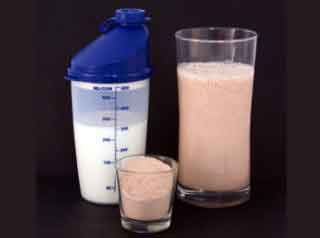Telehealth Reverse Diabetes Moving Through Weight Plateaus | Free Trial In Texas

Want to Reverse Diabetes? Reducing calorie intake by a third and doubling daily physical effort is a good way to start.
It’s amazing! Losing the first 10 pounds happens quickly.
Then comes an inevitable weight loss plateau.
To learn more about the programs Herd Healthcare offers, our website is:
www.herdhealthcare.com
Metabolic Adjustments During Weight Loss
Our natural function maintains a ready supply of energy for physical work. Sugar and fat stored in our muscles quickly supply energy for physical work. When calorie intake during the day doesn’t match energy output, the balance comes overnight using stores of sugar and fat in the liver.
Excess calories not balanced overnight are stored in fat tissue throughout the body. During history, human survival when food was scarce depended on excess calories that had been stored as fat.

Reduction in calories that can’t be balanced overnight causes loss of sugar and fat in muscle. When sugar stored as glycogen is used for energy it releases water.
As shown in the Table, carbohydrates including sugar made of glucose and fructose have 4 calories in every gram. They are stored in chains called glycogen combined with water. Release of energy from 1 gram of glycogen also produces 3 grams of water. Thus, 4 calories released from sugar in muscle reduces weight by 4 grams (1 gram from sugar, 3 grams of water). Four calories reduce weight by 4 grams and 500 calories reduce weight by 500 grams. In 1 week, reducing intake by 500 calories a day causes about 8 pounds loss of weight.
That’s a lot more than the 1 lb per week promised by the “3,500 Rule” for reducing intake of energy by 500 calories per day. So, you think, losing 2 pounds that first week must mean 1,000 calories was reduced and lost every day! Not so. That was 2 pounds lost by releasing 125 calories from glycogen every day.

As shown in the Figure, it gets harder. By 4 weeks, all the glycogen that can be released is gone. Now, losing 1 pound of fat really does require reducing 500 calories per day. Four times the amount reduced each day during the first 4 weeks. Continuing to lose just 125 calories a day inevitably causes a plateau in weight loss.
The natural metabolic response to loss of weight now becomes important. During weight loss, energy use is reduced. Partly by less physical work and partly by decreased metabolic rate of most organs.
Decreases in resting metabolic rate with weight loss differ greatly between individuals. Those who decrease metabolic rate the most conserve body weight and lose less than half the weight lost by those who adjust less.
This has been shown in a study of 12 men and women in Arizona. All were Obese and had Body Fat that averaged more than 40% of total weight. After a 3-week period of weight stabilization all had a 5-week period of weight loss during 50%  reduction in caloric intake and minimal physical activity. Daily 24-hour Energy Expenditure was measured before and during Weight Loss. They were divided into two groups above and below the average 35% decrease in Daily Energy Expenditure (DEE).
reduction in caloric intake and minimal physical activity. Daily 24-hour Energy Expenditure was measured before and during Weight Loss. They were divided into two groups above and below the average 35% decrease in Daily Energy Expenditure (DEE).
As shown in the Figure, those 6 men and women who decreased DEE the most had the least % Weight Loss. On average, those with the greatest DEE lost about twice as much weight as those with the least DEE.
Increased protein intake is important to maintain muscle mass during weight loss. For everyone, supplying more protein is essential to restrain breakdown of muscle to supply energy. For some, increasing protein intake can increase metabolic rate and break through a plateau in weight loss.
It’s hard to say exactly how increasing protein helps losing weight.
(1) A metabolic benefit is supplying amino acids from protein circulating in the blood to stimulate new muscle cells and prevent old muscle from breaking down.
(2) Controlling appetite is easier when added protein takes longer to be absorbed.
Standard recommendations for daily intake of calories is 45-65% from carbohydrates, 10-35% from protein and 20-35% from fat. Recommendations for weight loss are 30% from carbohydrates, 40% from protein and 30% from fat.
 This means cutting carbohydrates to less than half, doubling protein and keeping fat about the same. That also means supplementing protein. Getting 150 grams of protein a day from ordinary meat and vegetables is hard to do without overloading starch, sugar and fat.
This means cutting carbohydrates to less than half, doubling protein and keeping fat about the same. That also means supplementing protein. Getting 150 grams of protein a day from ordinary meat and vegetables is hard to do without overloading starch, sugar and fat.
The most practical way to increase protein intake is mixing milk protein powder in water. A cup of Protein Shake contains 30 grams of protein and costs about $1. Less expensive sources of protein include Tofu, Chickpeas, Soybeans, Cottage Cheese and Yogurt.
Genetic Expression
Metabolic adjustment to weight loss is controlled by chemical tags to basic DNA Elements called Genes. Accumulation and arrangement of chemical tags called Epigenetics happens slowly. Some features are transmitted at conception and others are adjustments during pregnancy. More changes occur during growth and development. Some related to nutrition, some related to physical activity and others related to smoking, medications and toxins in the environment. The end result can be profound differences in expression of inherited genetic code.
What begins as an almost irresistible individual characteristic can be changed. Dangerous features such as obesity, low skeletal muscle and high levels of insulin can be converted to a safer state.
Moving through a plateau in weight loss that is caused by chemical tags to genes takes time and effort. Success requires daily calorie intake half what it was at the start and maximum waist circumference less than half the standing height.
Combined Exercise And Calorie Restriction
Moderate and strenuous exercise can lead to weight loss. Both aerobic training and strength training improve action of insulin, reduce levels of glucose in blood and increase Daily Energy Expenditure.
Both Exercise and Calorie Restriction have separate effects on Metabolic Adjustments. Together, they have even greater combined effects on reducing Type 2 Diabetes.
The benefits of combining Exercise Expenditure and Calorie Restriction were demonstrated in Overweight adults living in St. Louis. A study of 52 men and women who did not have diabetes was designed to produce weight loss of about -7% in 12 to 14 weeks. All had measurements of calorie intake, energy expenditure and body composition before and after their participation. In addition, all had measurements of insulin secretion and insulin resistance before and after participation.
They were divided equally into 3 groups. As shown in the Figure, one group had a -32% reduction in calorie intake with no change in exercise, a second group combined -27% reduction in calorie intake with 5% increase in energy  expenditure and the third group had -5% reduction in calorie intake with an 8% increase in energy expenditure.
expenditure and the third group had -5% reduction in calorie intake with an 8% increase in energy expenditure.
The study was designed to cause equal changes in body weight with distinct differences in duration and intensity of aerobic exercise. The Exercise only group performed moderate or strenuous aerobic exercise 8 hours per week. The group that Combined Exercise with Calorie Restriction performed similar exercise 4 hours per week. The Calorie Restriction group had no increase in physical activity during the study.
The Figure shows differences measured in Body Composition among the 3 groups. The greatest reduction in Fat Mass occurred in the EX group. The  greatest reduction in Fat-Free Mass was seen in the CR group. The Combined group fell between the other two groups in both measures of Body composition.
greatest reduction in Fat-Free Mass was seen in the CR group. The Combined group fell between the other two groups in both measures of Body composition.
All 3 groups reduced secretion of insulin in response to matched infusions of glucose. However, the amount of insulin secreted in response to glucose concentrations was lowest of all in the group which Combined Calorie Restriction and Exercise during the study.
These data emphasize the benefit of combining weight loss with increase in exercise to lower levels of insulin required to prevent Type 2 Diabetes.
Managing Plateaus in Weight Loss
There’s always a reason that Weight Loss Plateaus during Reversal of Diabetes. Although you never can be sure why Weight Loss gets stuck, what to do is always the same. Check to make sure that intake of calories is less than basal metabolism plus energy expended in physical work.
 Any plateau losing weight indicates it’s time to double the effort to decrease fat stores and increase muscle strength.
Any plateau losing weight indicates it’s time to double the effort to decrease fat stores and increase muscle strength.
Limited mobility must not be an excuse to not exercise. Strength training is just as valuable as endurance exercise. Strengthen weak leg muscles by rhythmic pushing and relaxing against elastic resistance bands. Keep doing it until your legs are really tired. Then contract and relax muscles of your arms and shoulders until you’re tired all over. You’ll become stronger, your metabolism will increase, you’ll burn more calories and you’ll sleep well at night.

We are pleased to share our blog articles with you, and we are always interested to hear from our readers. Our website address is: www.herdhealthcare.com




